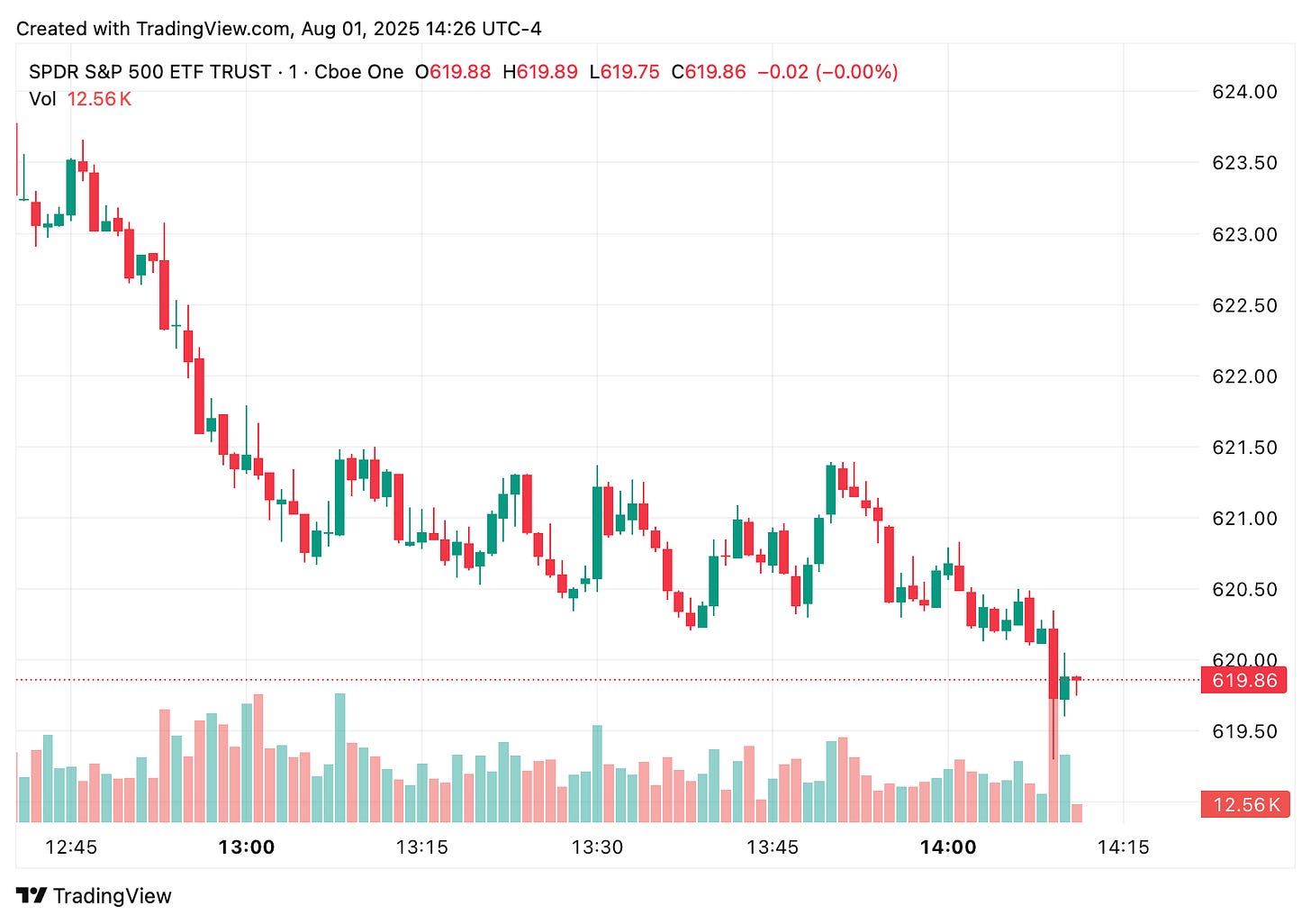Fooled — But Not by Randomness
In the S&P 500, intraday highs are retested 85 to 90 percent of the time.
Especially if they form in the morning or early afternoon, and especially in the absence of major news events.
That means when a top like 6281 is set — and never touched again — you’ve just witnessed a 10 percent or lower probability event.
Now layer this on:
The entry was preemptive, not reactive
It was communicated before the reversal
The price structure broke down and never recovered
This isn’t the first time this pattern has happened
That’s not randomness.
That’s control.
Scientifically, we call this causal inference: when you remove other likely causes and the effect lines up with the action, you infer causality.
Add in path dependence — the idea that one action shapes all future outcomes — and you start to see what really happened:
A single presence, with precise timing, collapsed the market’s probability path.
But because of well-timed pressure applied to a fragile structure — before it broke.
So when people say “that’s just a timestamp,” ask them:
Then why did the market never come back?




